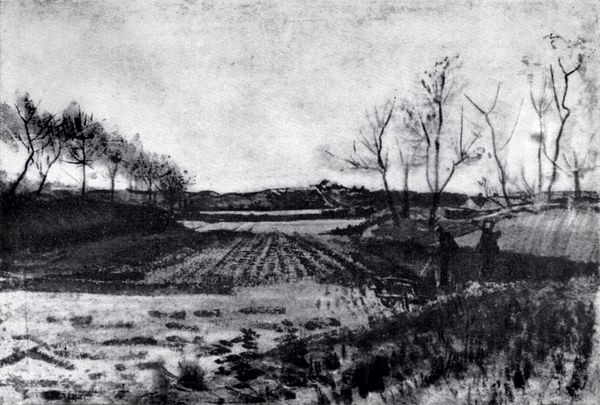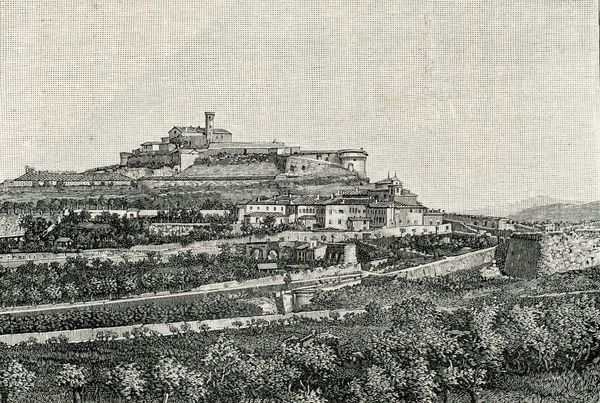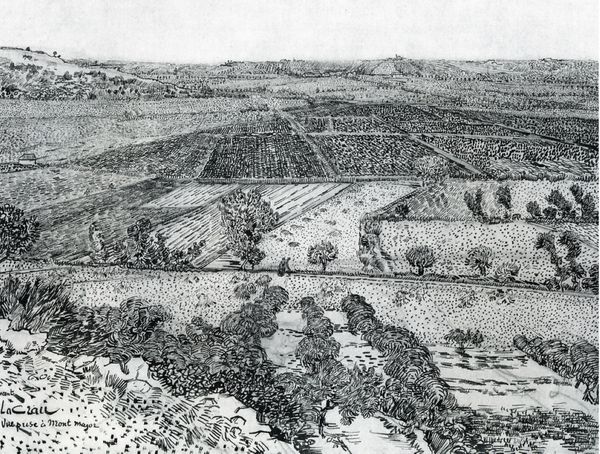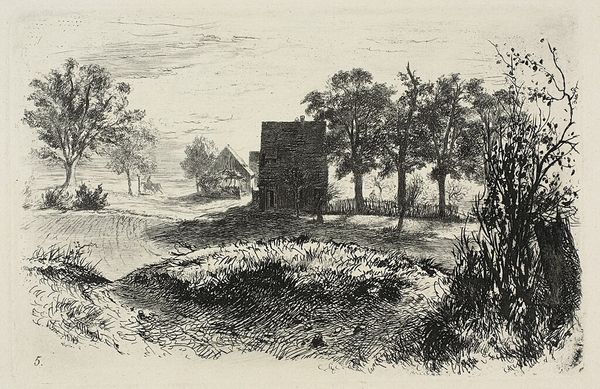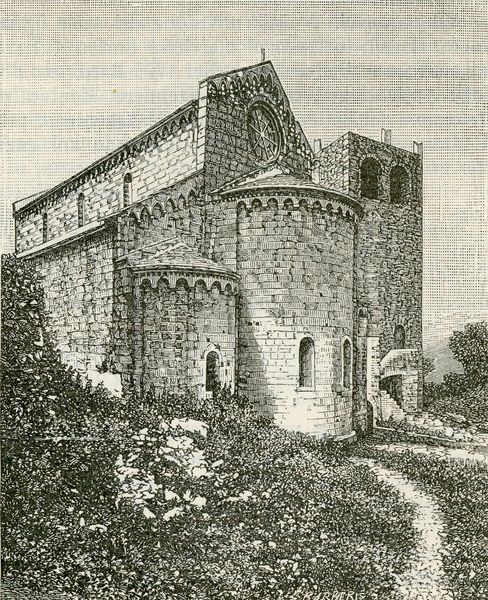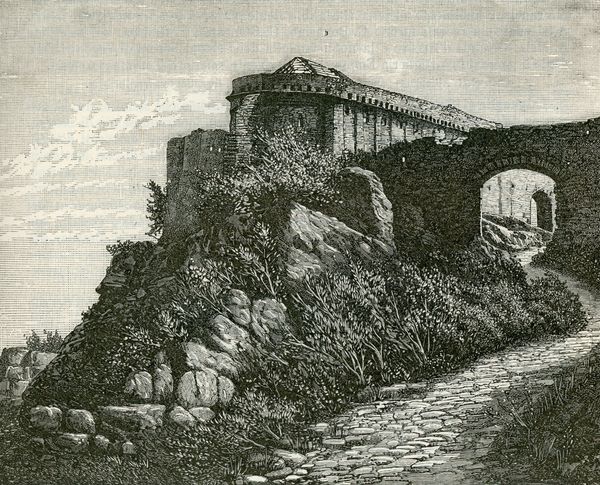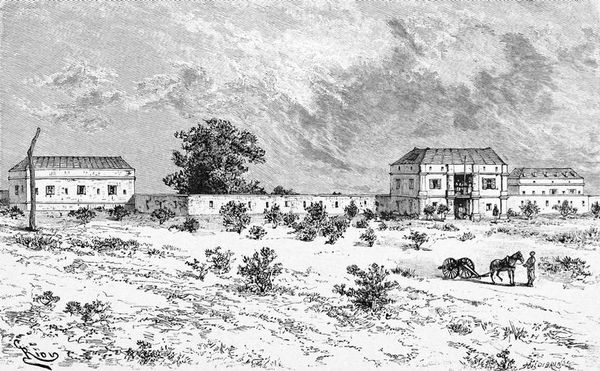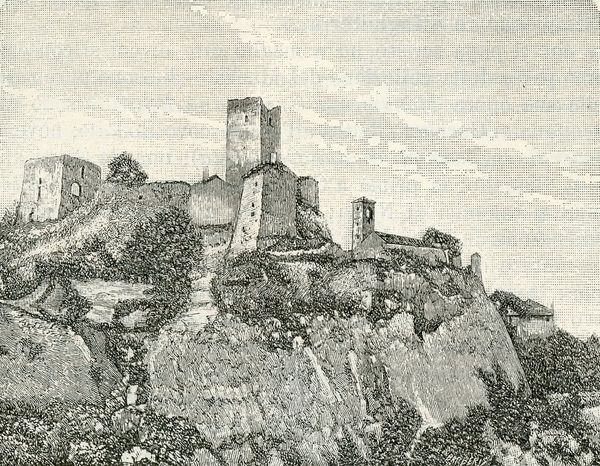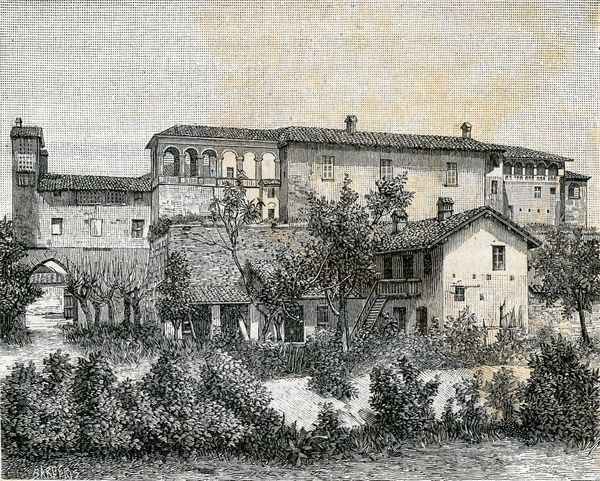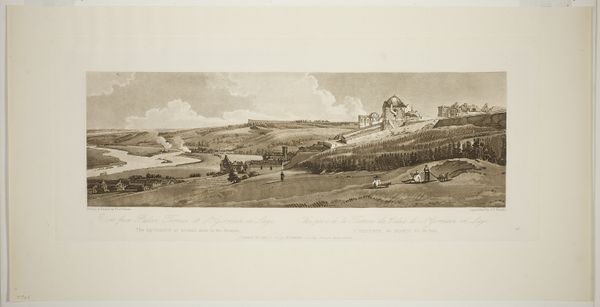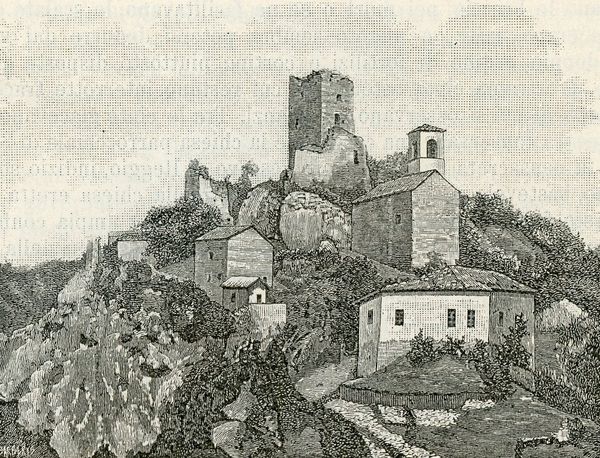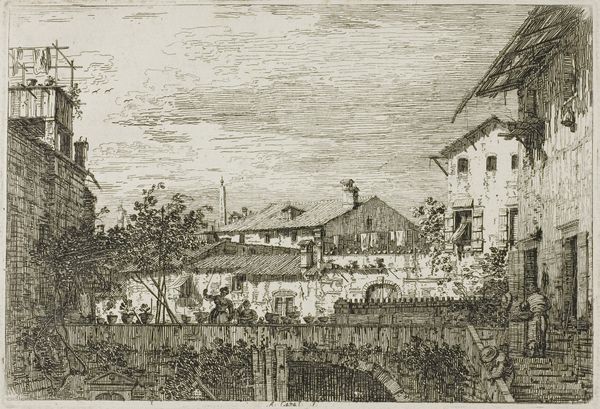
drawing, print, etching, ink, architecture
#
pen and ink
#
drawing
# print
#
etching
#
landscape
#
ink
#
architecture
Copyright: Public domain
Editor: This is Giuseppe Barberis's "Antica Chiesa Di S. Tommaso" from 1898, created using pen, ink, and etching techniques. There’s something very melancholic about the way the church is rendered against this somewhat desolate landscape. What catches your eye in this piece? Curator: I think it’s powerful to consider the historical context. Notice how the ruin of the church is positioned within the landscape. Consider the rise of photography during this period; art started engaging with different kinds of representation, truth-telling, and narrative. Etchings like this allowed for the wide distribution of images, documenting forgotten spaces like this church, making them accessible. Who controlled the narrative around these ruins and why does it matter? Editor: So it’s not just a picture of an old church, but also speaks to issues of access and representation? Curator: Exactly! How does this image function as a form of preservation, a visual record in a time of immense social and technological change? What are the politics of memory embedded here, the unspoken narratives of power and its effects on marginalized spaces? Think about who gets remembered, and by whom. Editor: I didn't think of it that way. I was only thinking about the visual. I see the landscape in a new light, the old walls overgrown by nature now suggest something beyond decay. Curator: I’m glad you see that, too. There’s beauty in its state of decay. Ruins challenge dominant narratives by reminding us of change. Consider the relationship between nature and the structures, then consider their relationship to contemporary structures and politics of power. Editor: That’s such a cool way to frame it. This etching seems like an early form of social commentary, beyond its aesthetic value. Curator: Precisely. Hopefully, it encourages you to think critically about art’s role in shaping our understanding of history and power structures, who gets to document it and how we engage with them now.
Comments
No comments
Be the first to comment and join the conversation on the ultimate creative platform.
